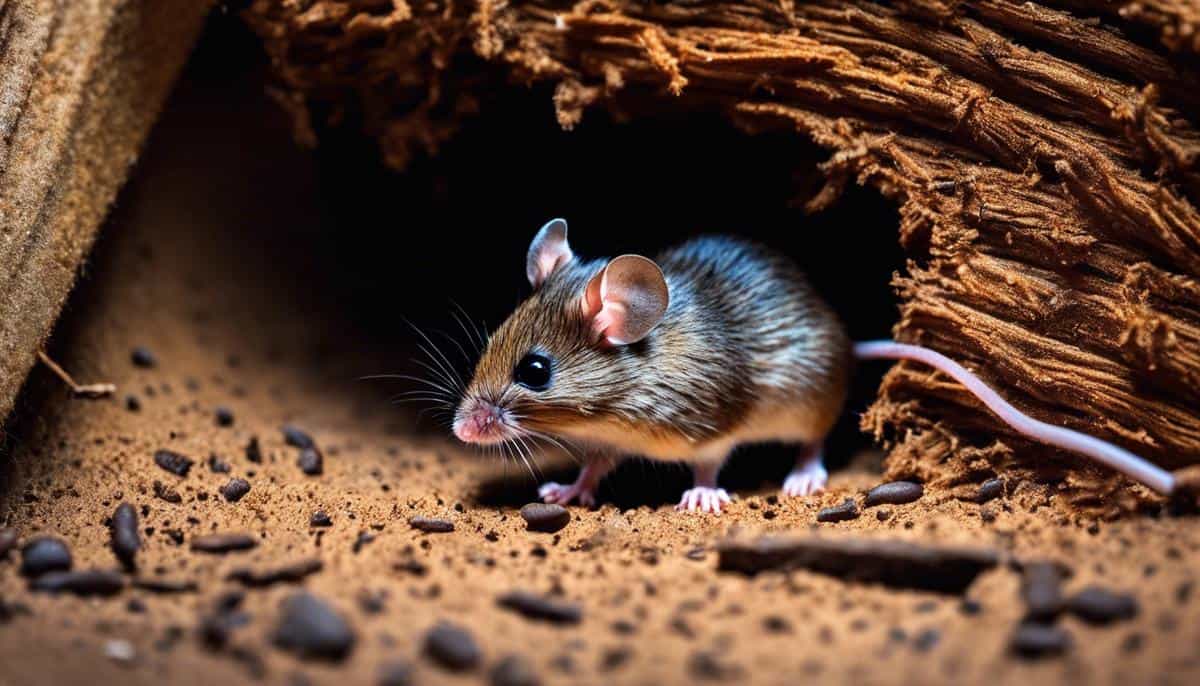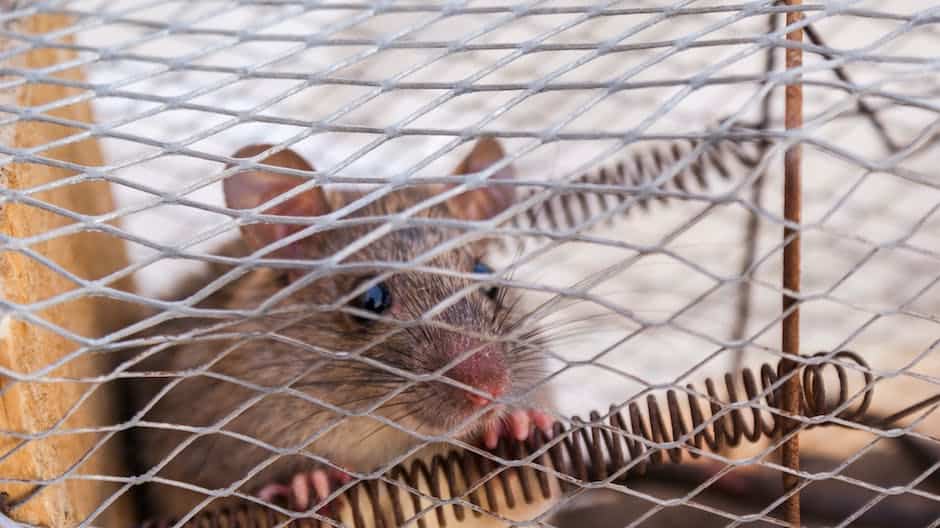
29 Nov Top Tips for Winter Mouse Prevention
In the chill of winter, the search for warmth and sustenance drives many creatures, including mice, to seek shelter indoors. An understanding of mouse behavior, particularly during these colder seasons, is essential in safeguarding your home against these wily and persistent intruders. This comprehensive guide will help you to recognize the signs of a mouse incursion, such as their characteristic tracks, droppings, and gnaw marks, and provide insights into their natural foraging and nesting habits. With this knowledge, we move on to examine a variety of preventive measures, from the meticulous sealing of potential entry points to the proper storing of food and maintaining a clutter-free environment.
Understanding Mouse Behavior
Don’t Fear, Prepare: Spotting the Signs of a Mouse Infestation at Home
As parents, one of our biggest responsibilities is to ensure the safety and wellbeing of our family in the coziness of our own homes. Besides ensuring love and comfort, it’s also important to keep an eye out for those unexpected guests that may creep in uninvited – yes, you got it right, we’re talking about mice! These little creatures can be a real nuisance, and while it might seem like a daunting task to spot their signs early on, rest assured it’s entirely possible.
First things first, let’s clear a common misconception: having mice in the home doesn’t mean your home is dirty or unkempt. Mice are crafty and resourceful creatures often attracted to homes for warmth and food. So, let’s dive into how to catch the signs of their unwelcome presence early on.
- Droppings: Easily one of the most common and visible signs of a mouse infestation is finding their droppings. Generally, these are dark and pellet-like, about the size of a grain of rice. You’re more likely to spot these droppings in undisturbed, hidden areas like inside cabinets, behind furniture, or along walls.
- Gnaw marks: Another telltale sign is gnaw marks. Mice need to consistently gnaw to keep their teeth in check, so coming across chewed furniture, wires, or food packages is a definite red flag.
- Nesting Materials: Mice love nest-building, and they can use anything conveniently available, from paper to plastic insulation, clothing, and plant matter. Finding such shredded materials in unexpected places should not be taken lightly.
- Odd Smell: A musky, stale smell – especially in a particular area – can indicate a mouse infestation. You may notice your pet dog or cat showing interest in spots they’ve rarely paid attention to before – they might be onto something, so do check!
- Noises: Mice are usually active at night, so you’re likely to hear faint scratching sounds in the walls, ceilings, or under the floors as they move around.
- Mouse Sightings: Although mice are secretive creatures, if you spot them during the day, this could be a sign of a large infestation.
- Tracks or Runways: Mice tend to use the same pathways between their nests and food sources, often leaving dark, greasy tracks or tail drag marks. Smearing flour or talcum powder can help you identify these tracks.
Identifying these signs at the earliest is crucial for preventing a full-blown infestation. If you suspect a mouse in your home, don’t fret; instead, be proactive in addressing the issue. Remember, creating a safe, healthy, and pleasant home is something we all strive for, and a possible mouse infestation is just another challenge we are more than equipped to handle!

Preventive Measures
Creating a Mouse-Free Home: Tips to Keep Your Family Space Clear
Imagine settling down for an evening with the family, movies ready and popcorn made, only to spot a scurry in the corner of your eye. Yes, the unwanted houseguest is a mouse. Home sweet home can attract all sorts of visitors, including these furry militants. However, maintaining a mouse-free environment is ideal for not just cleanliness, but safety too.
Let’s go straight to the point – no one wants these little critters running around our homes! Here’s how you can make your home less inviting for mice in three simple steps.
Step 1: One Man’s Trash is a Mouse’s Treasure
Ensure that all food sources are secured well, and leftovers are packed away immediately. Remember, even the smallest crumb can serve as a feast for a mouse. Be diligent about sweeping up after meals, sealing foods in containers, and ensuring trash can lids are fitted snugly. Mice are creative critters but getting into a tightly sealed container will be a challenge they can’t overcome.
Step 2: Close the Door, Keep the Mice Out
Attention to your home’s entry points is key. Mice are skilled climbers and can slip through openings as small as a dime. Surely, your home’s doors, windows, or roof aren’t that small! Regularly check your home for cracks or gaps in the walls, ceilings and floors. Seal these off with caulk, steel wool, or a combination of both to effectively deter mice. Hardware cloth can be used for larger holes. These steps offer double bonuses – they keep the mice out and winter drafts at bay!
Step 3: Declutter
A cluttered home not only causes stress for us humans but can also be an inviting hideout for mice. Areas filled with boxes, unused appliances, or piles of clothing can create many hiding places for the rodents to nest. Regular cleaning and decluttering will not only give you a more organized living space, it will also provide fewer hiding places for the uninvited guests.
As much as Mickey and Minnie are adored worldwide, having them roam freely around your home isn’t quite the magical kingdom adventure you’re after. By following these straightforward steps, you have a much better shot at keeping your home mouse-free, ensuring a more secure, safer space for your family. Let’s shift that energetic scurry towards an outdoors adventure. After all, a happy home is a mouse-free one!
Effective Mouse Traps and Baits
Winter brings a fresh set of challenges when it comes to keeping our homes mouse-free. But don’t fret! A few well-selected mouse traps and baits can make a world of difference in guarding our hearth and home against these tiny intruders. Here’s our guide to the best mouse traps and baits for wintertime.
First up: Snap traps.
They’re classic, budget-friendly, and truly efficient. But before you say, “Yuck, too barbaric,” hear us out. When correctly placed (in close walls or corners where mice love to scurry and explore), snap traps can quickly control a smaller population of mice, limiting any more extensive infestation down the line. Multipack snap traps are available online and at local stores. Apply a little peanut butter as bait—it’s the quintessential mouse magnet!
Next on the list: Electric traps.
While these might be a tad more expensive than snap traps, they are worth every cent if you’re dealing with a larger infestation. Electric traps are humane, safe around kids and pets, and are highly efficient. They work by delivering a quick and lethal electric shock to the mouse, ensuring a quick end without any suffering. Consider baiting these with a cheese cube or a small piece of cooked bacon.
If you’re looking for a more humane option to capture and release, live-catch traps are perfect.
These can hold multiple mice at a time and are perfect for those who prefer to deal with the issue without causing harm to the creatures. Pair these traps with a little chocolate spread, and the scent will coax even the most cautious mouse into the trap.
Sometimes, the situation calls for a more comprehensive approach—enter baits (or rodenticides).
These substances incorporate attractants into a lethal formula that is consumed by the mouse. Rodenticides are effective with larger infestations and locations where traps alone won’t suffice. However, ensure these are kept well out of reach of children and pets. Opt for rodenticide formulas that contain seeds or cereal grains. These are highly appealing to mice, even in low temperatures when food sources are scarce.
Last but not least, don’t underestimate the power of a great lure.
Effective baiting involves understanding how mice think and what tempts their palates. Nut spreads, seeds, cheese, and even bacon can serve as irresistible lures for our pint-sized invaders. Remember to change your baits regularly to keep them fresh and appealing.
There you have it, folks – the most effective winter mouse traps and baits, right at your fingertips. It’s time to take charge and protect our warm, cozy homes this winter! Happy trapping, and remember: it’s our space– let’s keep it that way.

Being prepared entails more than just preventative measures. It extends to knowing how to effectively respond to a mouse infestation, if one should occur despite your best efforts. Our exploration of various mouse control mechanisms includes the safe and proper use of a myriad of traps and baits available on the market. Armed with a comprehensive understanding of mouse behavior, preventive tactics, and a strategic action plan, you’re well-equipped to keep your home mouse-free this winter, ensuring that your hearth remains a haven of warmth and security, uninvaded by unwanted guests.

